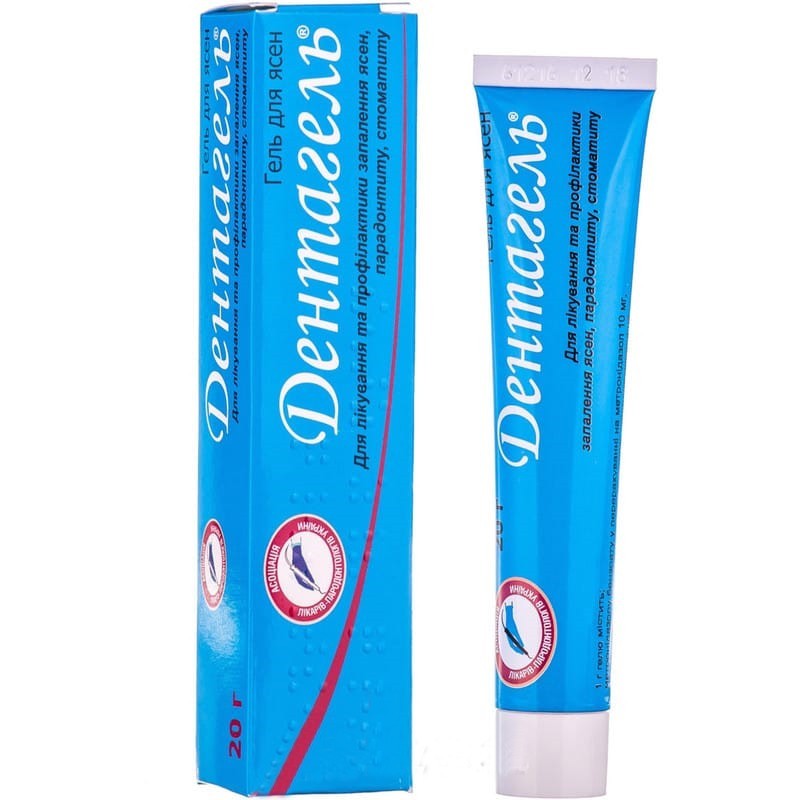



 Secure and encrypted payment processing
Secure and encrypted payment processing We ship to over 40 countries including the USA, UK, Europe, Australia and Japan
We ship to over 40 countries including the USA, UK, Europe, Australia and Japan Guaranteed refund or reship if you haven't received your order
Guaranteed refund or reship if you haven't received your orderAntimicrobial combination drug for the complex treatment and prevention of certain infectious and inflammatory diseases of the oral cavity.
The effectiveness of the drug is due to the presence of 2 antibacterial components - metronidazole and chlorhexidine.
Metronidazole is a derivative of nitroimidazole, which has an anti-decay and antibacterial effect. It is active against anaerobic bacteria that cause periodontal disease: Porphyromonas gingivalis, Prevotella intermedia, Prevotella denticola, Fusobacterium fusiformis, Wolinella recta, Elkenella corrodens, Borrelia vincenti, Bacteroides melaninogenicus, Selenomonas spp.
Chlorhexidine is a bactericidal antiseptic. Active against a wide range of vegetative forms of gram-negative and gram-positive microorganisms, as well as yeast, dermatophytes and lipophilic viruses.
Minimum Inhibitory Concentration (MIC)50) metronidazole for anaerobic bacteria - 1 μg / ml. With topical administration of the drug (application to the gums), the concentration of metronidazole in the gum region is significantly higher than with oral administration, and the level of systemic absorption of metronidazole with local administration is significantly lower than with oral. The main route of excretion of metronidazole and its metabolites is the kidneys. Decreased renal function does not change the pharmacokinetics of 1 dose of metronidazole. In the event that an excessive amount of chlorhexidine is swallowed during its topical administration, about 1% of the dose that has entered the stomach is absorbed in the dental gel in the digestive tract. Chlorhexidine does not accumulate in the body and is minimally metabolized.
Acute gingivitis, acute ulcerative necrotic gingivitis of Vincent; chronic gingivitis, including edematous, hyperplastic, atrophic (desquamative) gingivitis; chronic periodontitis; periodontal abscess; recurrent aphthous (ulcerative) stomatitis; toothache with infectious and inflammatory processes in the oral cavity.
The drug is intended for use in dentistry. Dentagel is prescribed for adults and children over the age of 12 years. the gel is applied to the gums 2 times a day. after applying the gel for 15 minutes, do not rinse your mouth and eat food. treatment duration - up to 14 days.
Hypersensitivity to metronidazole, chlorhexidine, as well as derivatives of nitroimidazole and any components of the drug.
The risk of developing systemic side effects with topical application of Dentagel is low, but sometimes there may be a metallic taste in the mouth, headache, burning sensation at the site of application, nausea, allergic reactions (skin rash, itching, urticaria). 1 case of edema of the eyelids as a manifestation of an angioneurotic reaction is described.
Avoid contact with eyes. the use of dentagel does not replace hygienic toothbrushing. during the use of the drug can not drink alcohol, as this can lead to stomach cramps, nausea, vomiting, headache and hot flashes.
The use of the drug during pregnancy and lactation is not recommended.
Children. It is not recommended to prescribe the drug to children under the age of 12 years.
The ability to influence the reaction rate when driving vehicles or working with other mechanisms. Unknown
When applied topically at the recommended doses, there is no systemic interaction of dentagel with other drugs. however, caution should be exercised when prescribing dentagel with certain drugs.
Warfarin and other coumarin anticoagulants. Metronidazole enhances the anticoagulant effect, which leads to an increase in the formation of prothrombin.
Disulfiram. Simultaneous use enhances the toxicity of drugs, which can lead to the development of neurological symptoms.
Phenobarbital, phenytoin.With simultaneous use with metronidazole, the antimicrobial activity of the latter decreases. The reason is the accelerated metabolism of metronidazole.
Cimetidine. It inhibits the metabolism of metronidazole, which can cause an increase in the concentration of metronidazole in blood plasma.
With an overdose, an increase in the severity of adverse reactions is possible.
In the original packaging at a temperature not exceeding 25 ° C.